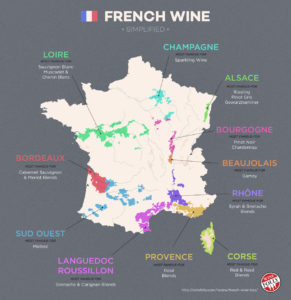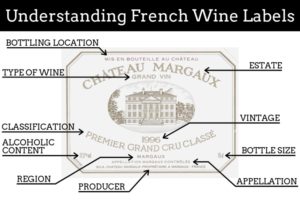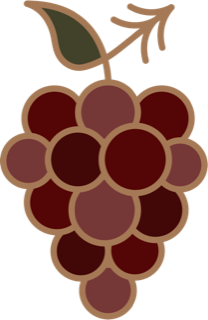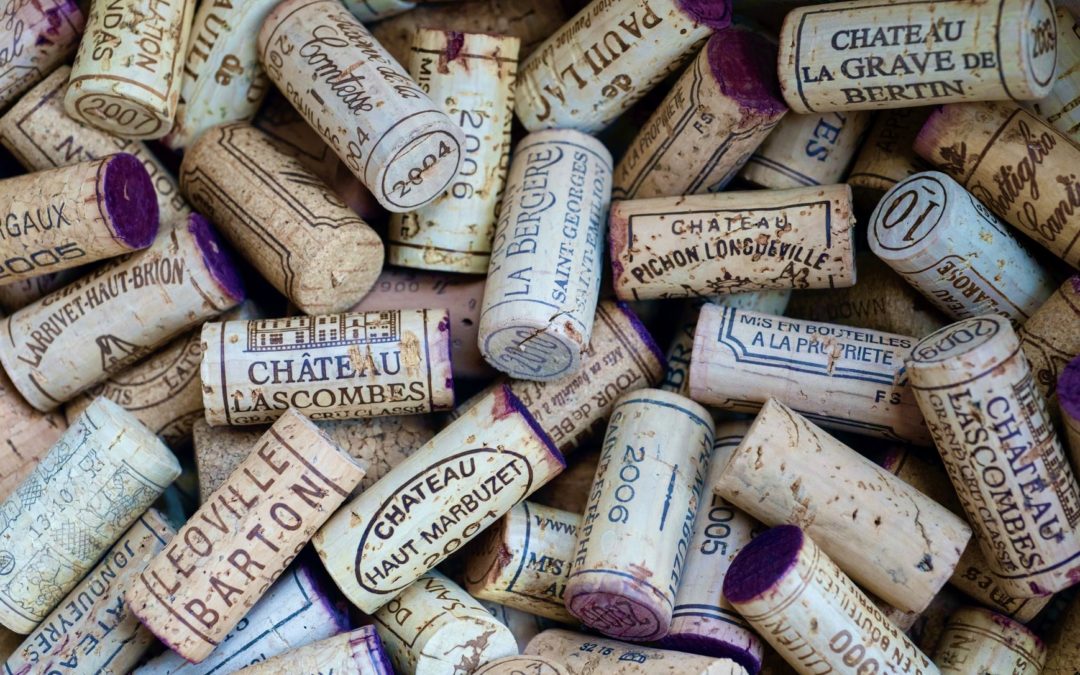Have you ever walked into a liquor store/wine shop to find a nice red wine to serve at a dinner with friends? You look around the shop and decide that a French red wine would be perfect! Then, disaster strikes! As you look at the wall of French wine labels you have no clue what they mean or what kind of red wine it is and if it will even work with what you’re serving! Well, luckily there are clues you can follow to choose just the right French wine for your taste and budget.
The first thing I’ll say is…this ain’t easy for a novice. But if you read on, you’ll find that it really isn’t rocket science and you will come to decipher the labels on these bottles in no time. Wine labels from New World wines (the US, Australia, etc.) are fairly straightforward. They will show the name of the winery/producer, where it’s grown, the varietal, and the vintage. Pretty easy, right? Then, there’s the Old World wines (France, Italy, Spain, etc.) and it’s a whole other challenge. We are going to look at French bottling labels and I’ll give you some incite as to how to read and understand what the heck they are saying about the wine in the bottle.
Typically, Old World wine labels focus on the region where the wine is from as opposed to the varietal of grape (Cabernet Sauvignon, Pinot Noir, Chardonnay, etc.). So, for French wine, first check the region where the wine is from. This will give you a clue as to what varietal or blend of varietals are in the bottle. French wine is usually a blend of different grapes. For example, the wine in the example below is from the Margaux region of France. This region, located in Bourdeaux area, is known for their Cabernet Sauvignon. So, I’m guessing you’re now thinking that you need to know all the regions of France in order to pick a French wine. Well, I’m not going to lie, you’ll have to do a little bit of studying or check out a map of France with their regions, take a picture and bring it with you to shop for your wine. For most Americans, you can pick up a Cabernet Sauvignon (Bordeaux region) or a Pinot Noir or Chardonnay (Burgundy region) with little study.
Here’s a map of France with its regions and wines associated. This map is from Wine Folly. Check out their excellent website for more wine info: winefolly.com

Here’s a label from a French wine. Let’s look at what each part means. Starting at the top…

Bottling Location: Where the wine was bottled
Estate: Name of the Chateau or Estate where the wine is from
Type of Wine: What level (according to French standards) the wine is
Vintage: When the grapes were harvested
Classification: The wine or estate’s classification
Alcohol Content: Alcohol level of the wine
Bottle size: Volume of the wine bottle
Region: The wine’s geographical region
Appellation: The wine’s appellation of origin as designated by the French government
Producer: Wine maker
For me, looking at the wine classification will give me clues as to the level of quality. The French government has designated their top-quality levels for French wine:
AOC (Appellation d’Origine Contrôlée): This indicates the geographical origin, quality, and style of the wine.
- Grand Cru is the very highest classification of French wine. This refers to either the plot of land where the grapes were grown or the chateau where the wine is made.
- Premier Cru is either the very highest tier within the Grand Cru classification or a vineyard plot of superior quality (most often Burgundy).
I hope this gives you some insight into French wine labeling. Check out some of the French wines at your local wine shop and see if you can decode them. Learning about wine is interesting and tasting wines from different parts of the world is always an experience.
Have fun exploring!
À votre santé

